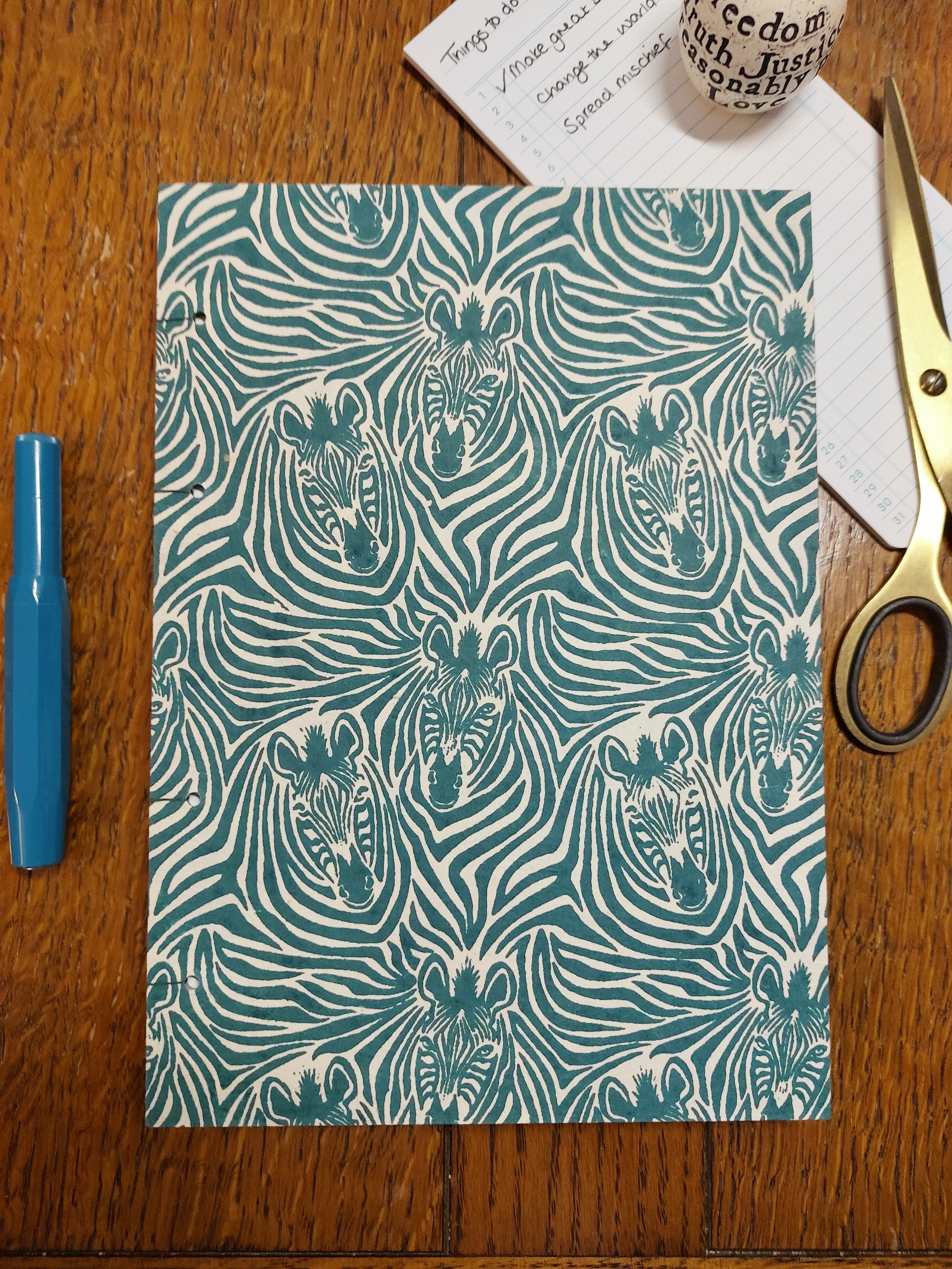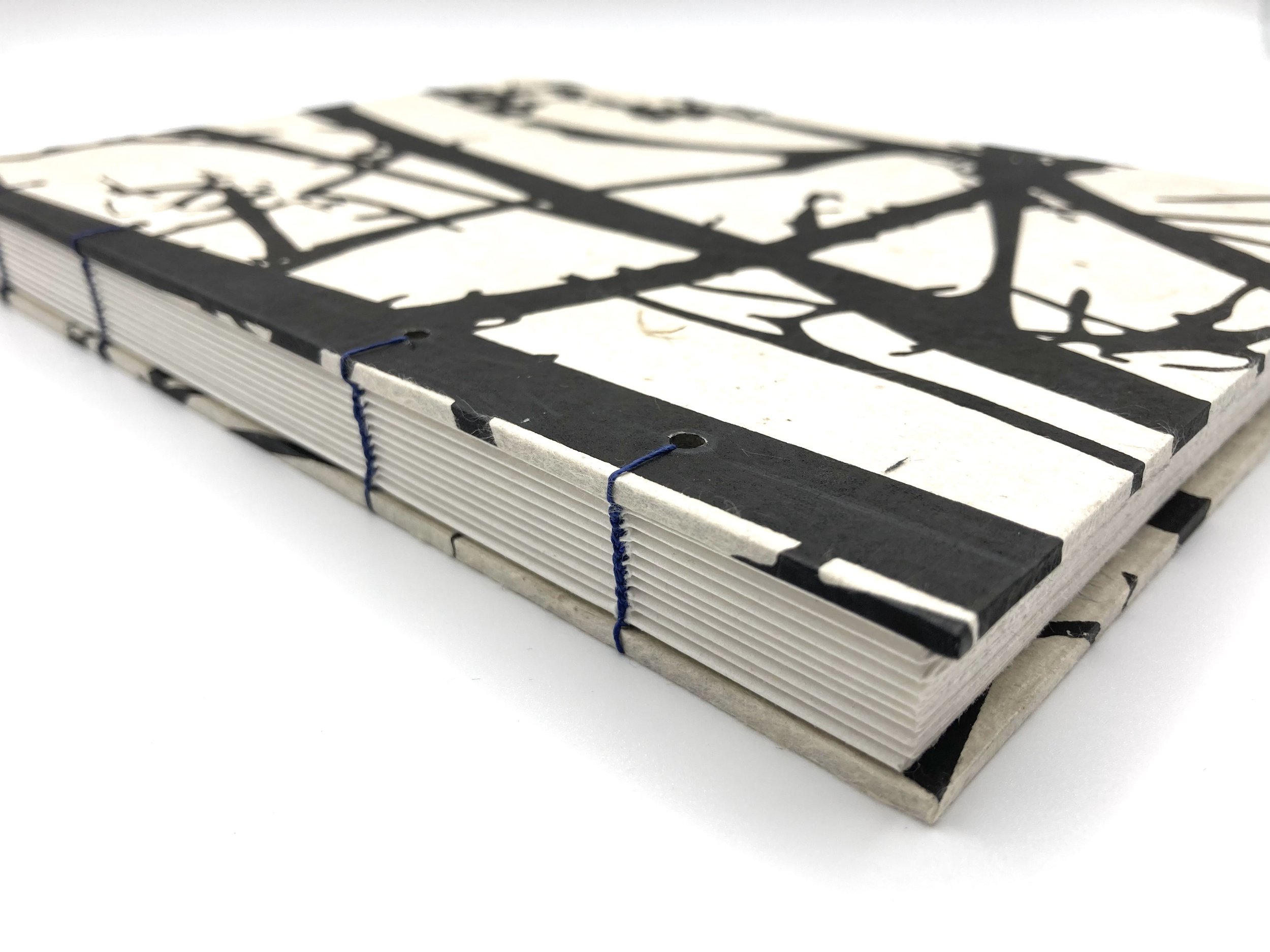 Image 1 of 11
Image 1 of 11

 Image 2 of 11
Image 2 of 11

 Image 3 of 11
Image 3 of 11

 Image 4 of 11
Image 4 of 11

 Image 5 of 11
Image 5 of 11

 Image 6 of 11
Image 6 of 11

 Image 7 of 11
Image 7 of 11

 Image 8 of 11
Image 8 of 11

 Image 9 of 11
Image 9 of 11

 Image 10 of 11
Image 10 of 11

 Image 11 of 11
Image 11 of 11












Sharp Horizontal Teeth A5 Journal
An eye-catching, high-quality handmade notebook featuring a striking black and white cotton fabric cover (we always think of sharks' teeth!) with pink lokta paper inside covers. It contains 144 blank pages of premium, recycled 'Cupcycle' paper, perfect for various writing media. The pink Coptic stitching allows the notebook to lay flat, making it easy to write comfortably up to the edges on both sides—because we all know that struggle!
An eye-catching, high-quality handmade notebook featuring a striking black and white cotton fabric cover (we always think of sharks' teeth!) with pink lokta paper inside covers. It contains 144 blank pages of premium, recycled 'Cupcycle' paper, perfect for various writing media. The pink Coptic stitching allows the notebook to lay flat, making it easy to write comfortably up to the edges on both sides—because we all know that struggle!
An eye-catching, high-quality handmade notebook featuring a striking black and white cotton fabric cover (we always think of sharks' teeth!) with pink lokta paper inside covers. It contains 144 blank pages of premium, recycled 'Cupcycle' paper, perfect for various writing media. The pink Coptic stitching allows the notebook to lay flat, making it easy to write comfortably up to the edges on both sides—because we all know that struggle!
This versatile notebook is perfect as a journal, workbook, or for jotting down notes around the house. Perfect for anyone who appreciates unique stationery, keeps a journal, or simply loves making lists. We all know someone obsessed with stationery—maybe it’s you!
The exterior is covered in luxurious cotton fabric, adding a touch of elegance to your writing experience. Lokta paper is used on the inside covers, which has been made in Nepal for over 1000 years and is a sustainable product. The bush from which the raw material is taken regenerates to it's full size over five to seven years.
The book is hand stitched using coptic stitch, giving the impression of plaits across the spine of the book, which you will be able to see in the photo. The stitching is delicate, but strong. Coptic stitching was first used by Christians in Egypt (the Copts) between the 2nd and 11th centuries AD. This type of stitching allows the book to lay completely flat. It is worth noting that this also means there is some movement around the spine of the cover boards; however, this does not imply a weakness in the book! Without this movement, the book would not lay flat, so we never attempt to overcome this with glue or other methods.






























